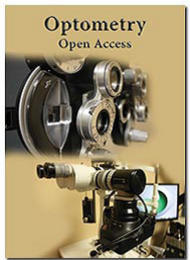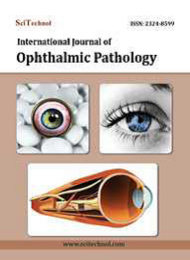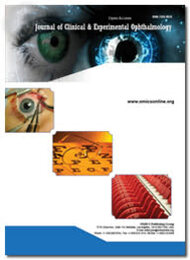Theme: We Want Everyone Living to Have Good Eye Health
Vision Science 2022
- About Conference
- Sessions/Tracks
- Relevant Conferences
- Vision Science and Eye Societies & Associations
- Market analysis
- Past Conference Report
32nd International Congress on Vision Science and Eye 2022 Conference will be organized during September 26-27, 2022 Rome, Italy on the theme We Want Everyone Living to Have Good Eye Health.
Eye and Vision science is a therapeutic administrations calling stressed with the prosperity of the eyes and related structures, and moreover vision, visual systems, and vision information get ready in individuals. Basic research in Vision Science focuses on such educates as bioengineering, psychophysics, neurophysiology, visual neuroscience, nuclear and cell science, cell film normal science, biostatistics, apply independence, contact central focuses, spatial course, visual ailments, refractive headway, corneal surface mapping, infant vision, computational vision, and 3D PC illustrating.
The eye is an optical system comprising of a cornea and a lens. The crystalline lens of the eye changes its shape to focus light from objects over a great range of distances on the retina. The basic optic function of the eye is to form an image of whatever object being looked at on the retina. The focus length of this lens is adjustable by the muscles attached to it according to the distance of the object so that its image is always formed on the retina in normal situation.
Vision Science and Eye 2022 brings together a unique and international mix of large and medium pharmaceutical, biotech and diagnostic companies, leading universities and clinical research institutions making the conference a perfect platform to share experience, foster collaborations across industry and academia, and evaluate emerging technologies across the globe. Vision Science and Eye 2022 maximizes the opportunity to interact with and learn from your peers from across the country and across the globe it held with the discussions on Cornea and External Eye Disease, Retina and Retinal Disorders, Neuro Ophthalmology, Glaucoma: Visual Field Loss, Ocular Microbiology and Immunology, Novel Approaches to Ophthalmology therapeutics and many more.
Why to Attend:
Attending a conference means that you can meet more advanced researchers, as well as established senior professionals and scholars. Listening to talks and presentations can open up new ways of thinking about a specific topic or even give you a new idea, one that you had previously not though about. Conference presentations provide great opportunities for you to communicate your research to a wide and interested audience, get feedback on your work, learn from other presenters and broaden your professional network. Preparation and practice are key to getting the most out of these occasions. With individuals from around the globe concentrated on finding out about clinical ophthalmology, this is the absolute best chance to achieve the biggest collection of members from the ophthalmology, optometry group.
Who can attend?
Clinical researchers & Scientists, Public Health Professional, Ophthalmic surgeons, Retina and Retinal Surgery, Glaucoma, Optometrists, Medical Practitioners, Professors, Deans, Students & Technicians, Medical & Health care Organizations & Associations, Optic and Radiations, Optical Power of the Eye, Optic Nerve Disease, Spectacle Lens, Contact Lens, Biophysics of vision, Stereopsis: 3D Vision, Researchers & Scholars, Idiopathic, Intracranial Hypertension, Ocular Migraine, Optometry.
Exceptional Benefits includes:
- CME accredited certification
- All accepted abstracts will be published in the conference souvenir & respective journals
- Each abstract will receive a DOI
- Certificate Accreditation by the International Organizing Committee (IOCM)
- All accepted abstracts will be published in the conference souvenir & respective journals
- Global Networking Opportunities
Track 1: Genetical Disorders of Eye
Genetic disorders are caused by mutations in our genes, which modify the resulting proteins. These mutations may occur spontaneously in an individual or are inherited through the parental chromosomes. They may manifest in the heterozygous state (be present on one chromosome, either paternal or maternal) or in the homozygous state (affecting both alleles). A mutation that is manifest in the heterozygous state leads to a dominant disorder, whereas mutations that manifest in the homozygous state are referred to as autosomal recessive. X-linked conditions differ from autosomal types in that women are unaffected or only mildly affected carriers and affected persons are usually male. Other disorders may require the additive effect of mutations in several genes in order to become manifest or require an environmental component; they are then referred to as polygenic or multifactorial. Some 6,000 human genetic diseases are known and about 1/3rd of these are purely ocular or have ocular manifestations.
Track 2: Visual Impairment
Visual impairment, also known as vision impairment, is a medical definition primarily measured based on an individual's better eye visual acuity; in the absence of treatment such as correctable eyewear, assistive devices, and medical treatment visual impairment may cause the individual difficulties with normal daily tasks including reading and walking. Low vision is a functional definition of visual impairment that is chronic, uncorrectable with treatment or correctable lenses, and impacts daily living. As such low vision can be used as a disability metric and varies based on an individual’s experience, environmental demands, accommodations, and access to services.
Track 3: Scrutiny of Visual Sensory System
Neuro diagnostic imaging and other techniques, examination of the afferent visual sensory system is still the core of the neuro-ophthalmologic examination. A thorough refraction is an essential part of all clinical neuro ophthalmologic examinations. Confrontation visual fields should be part of every afferent system examination. The relationship between the physical properties of light and perceptual and behavioural responses is known as visual psychophysics, which serves as the foundation for the clinical assessment of visual function. The determination of whether a patient’s visual field improves worsens, or remains stable over time is the most difficult aspect of visual field interpretation. Many attempts have been made to investigate visual field function using evoked potentials to visual stimuli.
Track 4: Vision and Cognition
The hypothesis that there is a correlation between vision and cognition is based on the impact of vision on mentally stimulating activities. Loss of vision hinders the performance of these tasks (e.g., reading, socializing) and may result in behavioural changes and cognitive decline. Deterioration in vision reportedly reduces physical, mental, and psychosocial activities which can lead to a poor cognitive state.
Track 5: Visual-Neuroscience
Visual Neuroscience is a branch of neuroscience that focuses on the visual system of the human body, mainly located in the brain's visual cortex. The main goal of visual neuroscience is to understand how neural activity results in visual perception, as well as behaviours dependent on vision. In the past, visual neuroscience has focused primarily on how the brain (and in particular the Visual Cortex) responds to light rays projected from static images and onto the retina. While this provides a reasonable explanation for the visual perception of a static image, it does not provide an accurate explanation for how we perceive the world as it really is, an ever-changing, and ever-moving 3-D environment.
Track 6: Keratoconus
Keratoconus occurs when your cornea the clear, dome-shaped front surface of your eye thins and gradually bulges outward into a cone shape. A cone-shaped cornea causes blurred vision and may cause sensitivity to light and glare. Keratoconus usually affects both eyes, though it often affects one eye more than the other.
Track 7: Dry Eye
Dry eye is a condition in which a person doesn't have enough quality tears to lubricate and nourish the eye. Tears are necessary for maintaining the health of the front surface of the eye and for providing clear vision. Dry eye is a common and often chronic problem, particularly in older adults. With each blink of the eyelids, tears spread across the front surface of the eye, known as the cornea. Tears provide lubrication, reduce the risk of eye infection, wash away foreign matter in the eye and keep the surface of the eyes smooth and clear. Excess tears in the eyes flow into small drainage ducts in the inner corners of the eyelids, which drain into the back of the nose. Dry eyes can occur when tear production and drainage is not in balance.
Track 8 Low Vision
Low vision is the loss of sight that is not correctible with prescription eyeglasses, contact lenses or surgery. This type of vision loss does not include complete blindness, because there is still some sight and it can sometimes be improved with the use of visual aids.
Track 9: Binocular Vision
Binocular vision is defined and the motor system and sensory system underlying binocular vision are summarised. A simple model of binocular vision is presented and terminology defined. The prevalence of binocular vision anomalies is reviewed, noting that primary eye care practitioners can expect to find binocular vision anomalies in at least one in five patients. The classification of binocular vision anomalies is described, noting that heterophoria can be classified according to the direction of deviation, fixation distance, and compensation. Strabismus can be classified according to constancy, direction of deviation, eye preference, and accommodative state.
Track 10: Glaucoma
Glaucoma is a group of eye conditions that damage the optic nerve, the health of which is vital for good vision. This damage is often caused by an abnormally high pressure in your eye. Glaucoma is one of the leading causes of blindness for people over the age of 60. It can occur at any age but is more common in older adults.
Track 11: Visual Perception
Visual perception is the ability to perceive our surroundings through the light that enters our eyes. The visual perception of colors, patterns, and structures has been of particular interest in relation to graphical user interfaces (GUIs) because these are perceived exclusively through vision. An understanding of visual perception therefore enables designers to create more effective user interfaces.
Track 12: Color Vision
Color vision deficiency is the inability to distinguish certain shades of color. The term "color blindness" is also used to describe this visual condition, but very few people are completely color blind. Color vision is possible due to photoreceptors in the retina of the eye known as cones. These cones have light-sensitive pigments that enable us to recognize color. Found in the macula (the central part of the retina), each cone is sensitive to either red, green or blue light (long, medium or short wavelengths). The cones recognize these lights based on their wavelengths. Normally, the pigments inside the cones register different colors and send that information through the optic nerve to the brain. This enables us to distinguish countless shades of color. But if the cones don't have one or more light-sensitive pigments, they will be unable to see all colors.
Track 13: Ocular Oncology
Ocular oncology involves the study and treatment of tumors that occur in or around the eye. These tumors can range from harmless to potentially life-threatening, and may cause vision loss or loss of the eye itself. Due to the complex nature of ocular oncology, our faculty includes experts in cornea, ophthalmic plastic surgery, pathology, and retina. Mass. Eye and Ear researchers and clinician scientists have experience with a range of conditions, including ocular surface tumors, uveal melanoma, orbital tumors and inflammation, and retinoblastoma.
Track 14: Vitreo-retinal
Vitreoretinal diseases are conditions that affect structures in the eye called the retina and the vitreous. The retina is the light-sensitive layer in the back of the eye that focuses images and transmits that information to the brain via the optic nerve. The vitreous is a clear gel that fills the space between the lens (in the front of the eye) and the retina.
Track 15: Oculoplasty & Orbital Diseases
Oculoplastic and orbital surgery is plastic surgery focused on the structures surrounding the eye, including the eyelids, orbit (bones of the eye socket), lacrimal system (tear duct system), forehead, and mid face area. Because surgery in these areas can affect vision, ophthalmic plastic surgeons are best qualified to perform this delicate surgery.
Track 16: Retinal Detachment
Retinal detachment describes an emergency situation in which a thin layer of tissue (the retina) at the back of the eye pulls away from its normal position. Retinal detachment separates the retinal cells from the layer of blood vessels that provides oxygen and nourishment. The longer retinal detachment goes untreated, the greater your risk of permanent vision loss in the affected eye.
Track 17: Blepharitis
Blepharitis is inflammation of the eyelids. Blepharitis usually affects both eyes along the edges of the eyelids. Blepharitis commonly occurs when tiny oil glands near the base of the eyelashes become clogged, causing irritation and redness. Several diseases and conditions can cause blepharitis. Blepharitis is often a chronic condition that's difficult to treat. Blepharitis can be uncomfortable and unsightly. But it usually doesn't cause permanent damage to your eyesight, and it's not contagious.
Track 18: Strabismus
Strabismus (crossed eyes) is a condition in which the eyes do not line up with one another. In other words, one eye is turned in a direction that is different from the other eye. Under normal conditions, the six muscles that control eye movement work together and point both eyes at the same direction. Patients with strabismus have problems with the control of eye movement and cannot keep normal ocular alignment (eye position).
Relevant Conferences: Vision Science Conferences | Vision Science and Eye Conferences | Eye Conferences | Vision Science and Eye Conferences 2022 USA | Vision Science and Eye Conferences 2022 Asia | Vision Science and Eye Conferences 2022 Europe | Vision Science and Eye Conferences 2022 Middle East | Vision Science and Eye Conferences 2022 Canada | Vision Science and Eye Conferences 2022 Japan | Vision Science and Eye Conferences 2022 Australia
35th World Congress on Advance Nursing Practice, November 14-15, 2022 Barcelona, Spain; 35th World Pediatrics Conference August 01-02, 2022 Rome, Italy; 33rd European Pediatrics Conference September 05-06, 2022 Berlin, Germany; 10th International Congress on Infectious Diseases January 23-24, 2023 Barcelona, Spain; 33rd European Pediatrics Conference September 05-06, 2022 Berlin, Germany; 8th International Conference and Exhibition on Satellite & Space Missions September 28-29, 2022 Paris, France; International Conference on Ophthalmology & Vision Research December 7-8, 2022, Dubai, UAE; 3rd Global Ophthalmology and Eye Diseases Summit September 12-13, 2022 Paris, France; 6th world congress on Eye and Vision October 11-12, 2022 Osaka, Japan; 4th World Congress on Vision Science & Eye Surgery August 29-30, 2022 Rome, Italy; International Conference on Vision Science & Eye August 01 – 02, 2022 Dubai, UAE.
EUROPE: Society for Eye Research, European Society of Vision Science and Eye, European Academy of Eye, European Society for Vision Science and Eye, Associations for European Vision Science and Eye (AEVSE), Padua, Italy, Czech Vision Science Society (CVS), European Academy of Eye Societies (EAES), Geneva, Switzerland, European Academy of Vision Science and Eye (EAVE), Geneva, Switzerland, European Association of Eye Education (EAEE), European Confederation of Vision Science and Eye (ECVSE), UK, European Vision Science and Eye Association, European Vision Science and Eye Association (EVSEA/UVSEA), Berlin, Germany, European Vision Science and Eye Society (EVES), Bolton, UK, European Vision Science and Eye Association (EVSA), London, UK, European Society for Vision Science and Eye (ESVEP), Geneva, Switzerland, European Society of Vision Science and Eye (ESVE), Prague, Czech Republic, European Society of Vision Science and Eye (ESVE), Scotland, UK, European Society of Vision Science and Eye (ESVSE), Geneva, Switzerland, European Society of Vision Science and Eye (ESVSE), Athens, Geneva, Switzerland, European Society of Vision Science and Eye (ESVSE), UK, European Society of Vision Science and Eye (ESVSE), European Society of Vision Science and Eye (ESVSE), Bristol, UK.
USA: American Academy of Vision Science, Academy of Eye, Association of Vision Science and Eye, Association of Vision Science and Eye, National Association of Vision Science and Eye, National Association of Vision Science and Eye, National Certification Board of Vision Science and Eye, Society of Pediatric Nurses, American Vision Science and Eye Association, Northeast Vision Science and Eye Association, American Vision Science and Eye Association, American Association for Pediatric Ophthalmology and Strabismus, American Society of Vision Science and Eye, Society for Vision Science and Eye, International Association of Vision Science and Eye, Canadian Vision Science and Eye Society, Vision Science and Eye Association, Georgia Vision Science and Eye Practice Managers Association, Academic Vision Science and Eye Association, Children's Hospital Association, North Carolina Vision Science and Eye Society, North Dallas Vision Science and Eye Association, Burlington Vision Science and Eye Association, American Vision Science and Eye Surgery Association, American Vision Science and Eye Society
ASIA PACIFIC: Asia Pacific Vision Science and Eye Association Malaysia, Asian Society for Vision Science and Eye Research Japan, The Malaysian Vision Science and Eye Association Japan, Association of Vision Science and Eye Surgeons Bangladesh, Indonesian Society of Vision Science and Eye Surgeons Indonesia, Japanese Society of Vision Science and Eye Surgeons Japan, Korean Association of Vision Science and Eye Korea, Taiwanese Association of Vision Science and Eye Taiwan, Vietnam Association of Vision Science and Eye Vietnam.
The generation is dependent on the use of the advanced contraptions, which is referred to as the reason for their expanded danger of visual issue. Usually for the people to hold employments as PC specialists however individuals depend on these stages for diversion, news, and even social updates from friends. In the ebb and flow situation 253 million individuals live with vision impedance and 36 million are visually impaired and 217 million have direct to extreme vision debilitation .It is regular to find that individuals the age 50 have serious visual hindrances and 81% of these age assemble winds up daze annually. Apart from these issues, interminable eye ailments are the fundamental purpose behind vision misfortune. The two principle explanations behind the vision impedance is accounted for as Uncorrected refractive blunders and untreated waterfall .Untreated waterfall remains the main source of visual deficiency in low-and centre wage nations. However by endeavors and progression in the field of Optometry and Vision Science have lessened more Ocular issue and maladies. The irresistible eye maladies, for example, trachoma and onchocerciasis, have diminished fundamentally finished the last 5years and beyond any doubt that about over80% of all vision weakness can be forestalled or relieved.
Vision Science 2021
Gratitude’s to all of our honourable speakers, conference attendees and sponsors. Vision Science 2021 Conference was our best ever!
31st International Congress on Vision Science and Eye, hosted by the Conference Series LLC ltd was held during September 27-28, 2021 as Webinar. Magnanimous response and active participation was received from the Editorial Board Members of conference series as well as from the Vision Science professionals, Vision Science Researchers, Vision Science Nurses, Vision Science Associations and Societies, Vision Science Faculty, Vision Science Physicians, Radiologists, Pharmaceutical Industries, Healthcare Industries, Researchers and Students, who made this event successful.
The meeting was carried out through various sessions, in which the discussions were held on the following major scientific tracks:
With the grand success of Vision Science 2021, Conference Series LLC is proud to announce the " 32nd International Congress on Vision Science and Eye” to be held during September 26-27, 2022 at Rome, Italy.
Mark your calendars for the upcoming Conference; we are hoping to see you soon!
Conference Highlights
- Genetical Disorders of Eye
- Visual Impairment
- Scrutiny of Visual Sensory System
- Vision and Cognition
- Visual-Neuroscience
- Keratoconus
- Dry Eye
- Low Vision
- Binocular Vision
- Glaucoma
- Visual Perception
- Colour Vision
- Ocular Oncology
- Vitreo-retinal
- Oculoplasty & Orbital Diseases
- Retinal Detachment
- Blepharitis
- Strabismus
To share your views and research, please click here to register for the Conference.
To Collaborate Scientific Professionals around the World
| Conference Date | September 26-27, 2022 | ||
| Sponsors & Exhibitors |
|
||
| Speaker Opportunity Closed | Day 1 | ||
| Poster Opportunity Closed | Click Here to View | ||
Useful Links
Special Issues
All accepted abstracts will be published in respective Our International Journals.
- International Journal of Ophthalmic Pathology
- Journal of Clinical & Experimental Ophthalmology
- Optometry: Open Access
Abstracts will be provided with Digital Object Identifier by

















